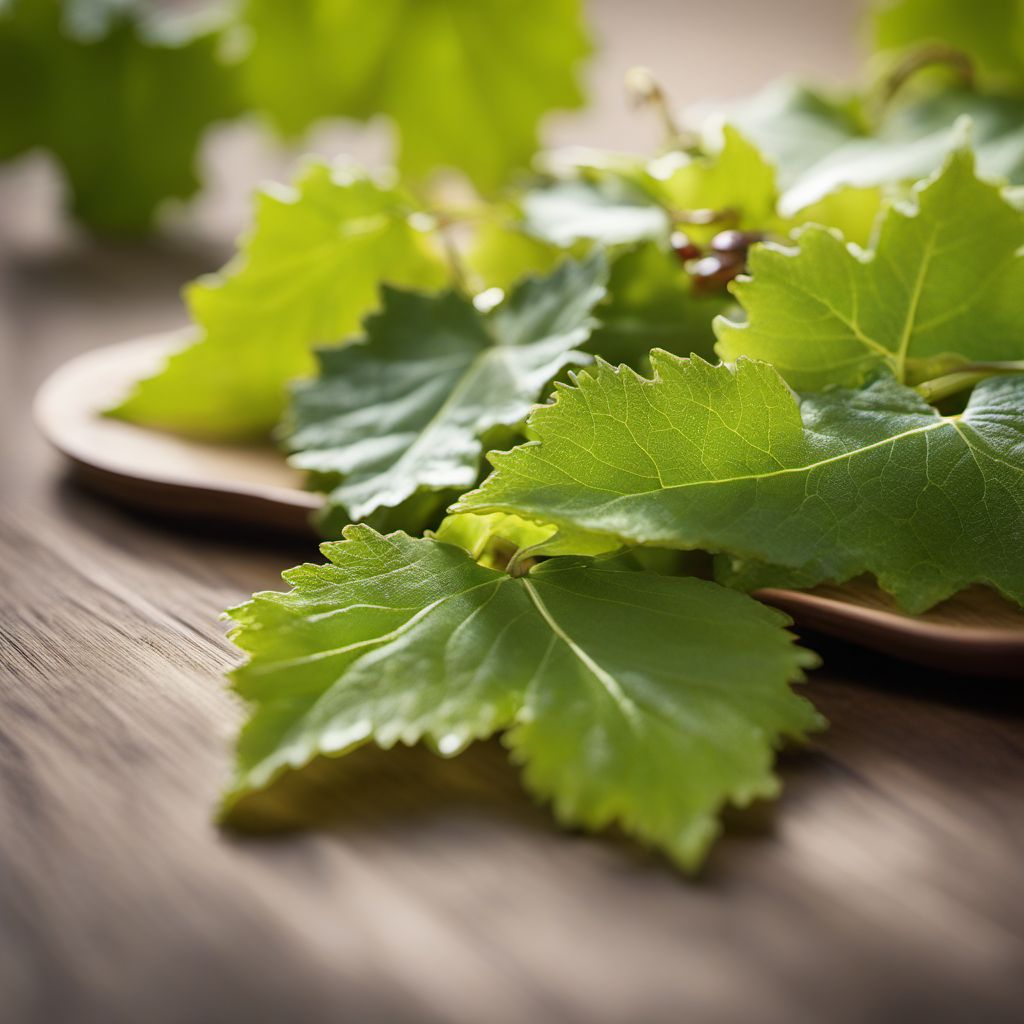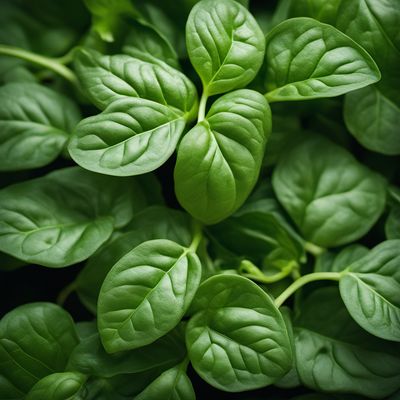
Ingredient
Grape leaves and similar species
Nature's Edible Wrappers: Exploring the Versatility of Grape Leaves
Grape leaves are large, heart-shaped leaves that are typically green in color with a slightly waxy texture. They have a mild, tangy flavor with a hint of bitterness. The leaves are pliable and sturdy, making them ideal for wrapping and stuffing. They are commonly used in Mediterranean and Middle Eastern cuisines, where they are filled with a variety of ingredients such as rice, meat, or vegetables, and then cooked or preserved. Grape leaves can be found fresh, canned, or preserved in brine or vinegar.
Origins and history
Grape leaves have been used in cooking for centuries and have their origins in the Mediterranean region. They were first cultivated in ancient Persia and later spread to other parts of the world, including Greece and Rome. The use of grape leaves in cooking can be traced back to ancient times, where they were used as a natural wrapper for food, providing both flavor and protection. Today, grape leaves are still widely used in Mediterranean and Middle Eastern cuisines, where they are an integral part of dishes like dolmas and sarma.
Nutritional information
Grape leaves are low in calories and fat. They are a good source of vitamins A and K, as well as calcium and iron.
Allergens
Grape leaves are generally safe to consume, but some individuals may have allergies to grape leaves or similar species. It is advisable to consult with a healthcare professional if you have any concerns or known allergies.
How to select
When selecting grape leaves, look for fresh, vibrant leaves that are free from blemishes or discoloration. The leaves should be pliable and not brittle. If purchasing canned or preserved grape leaves, check the expiration date and ensure that the packaging is intact.
Storage recommendations
Fresh grape leaves can be stored in the refrigerator for up to a week. To extend their shelf life, blanch the leaves in boiling water for a few seconds, then cool and store in an airtight container in the refrigerator. Canned or preserved grape leaves should be stored according to the manufacturer's instructions.
How to produce
Grape leaves can be grown by planting grapevines in a suitable climate. They require well-drained soil and ample sunlight. With proper care and maintenance, grapevines will produce leaves that can be harvested for culinary use.
Preparation tips
Before using grape leaves, rinse them thoroughly to remove any brine or vinegar. If using fresh leaves, blanch them in boiling water for a few seconds to soften them before using. To remove any bitterness, soak the leaves in water for a few minutes or blanch them in boiling water for a longer period. Grape leaves can be used to wrap and stuff a variety of fillings, such as rice, meat, or vegetables. They can be baked, steamed, or grilled, depending on the desired dish.
Culinary uses
Grape leaves are commonly used to make dolmas, a popular Mediterranean dish where the leaves are filled with a mixture of rice, herbs, and sometimes meat, then cooked until tender. They can also be used to wrap and grill fish or vegetables, adding a unique flavor to the dish. In addition, grape leaves can be used as a decorative element in salads or as a bed for serving appetizers.
Availability
Grape leaves are commonly available in Mediterranean and Middle Eastern markets, as well as some specialty grocery stores. They can also be found online or harvested from grapevines grown in suitable climates.


